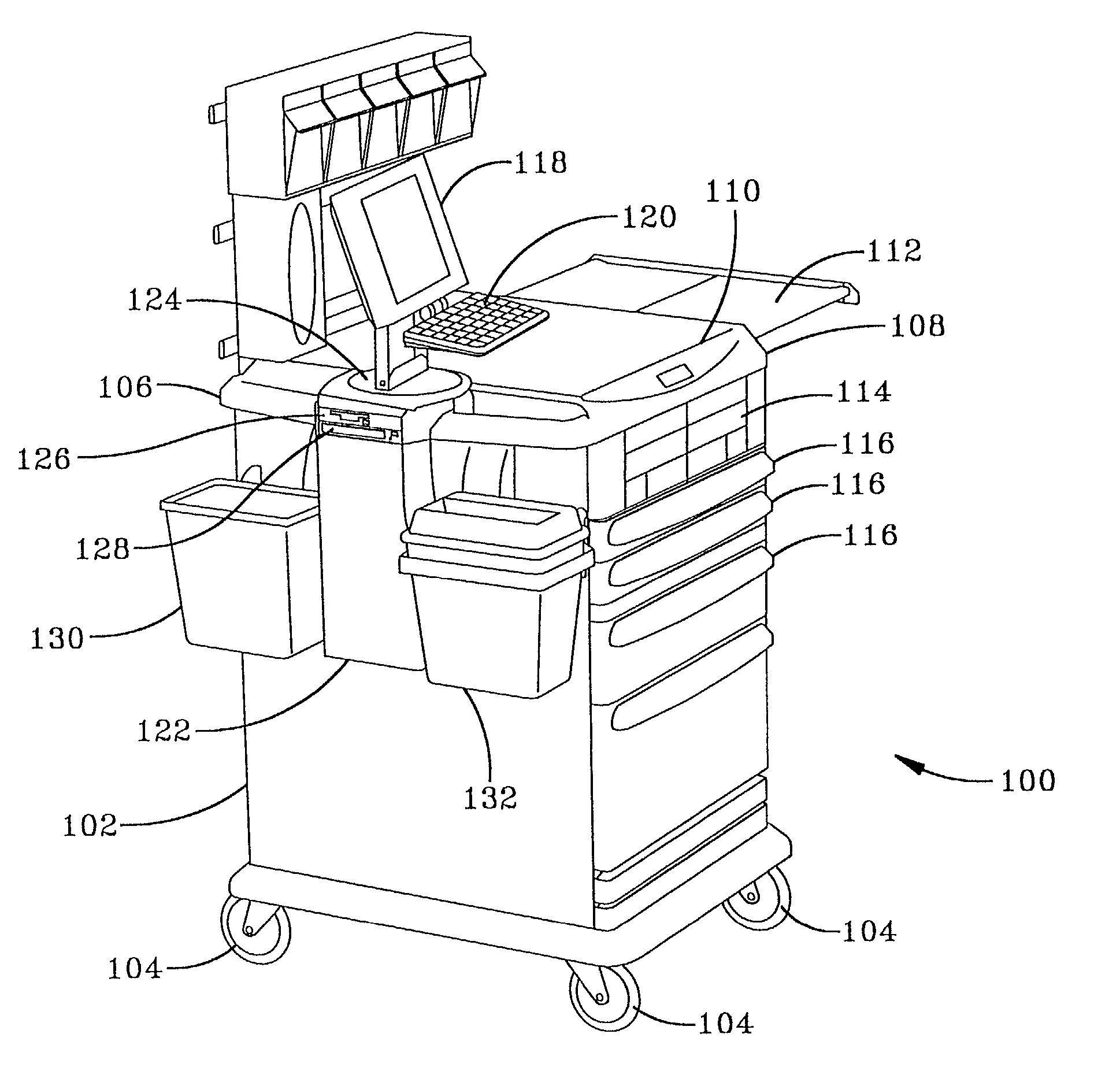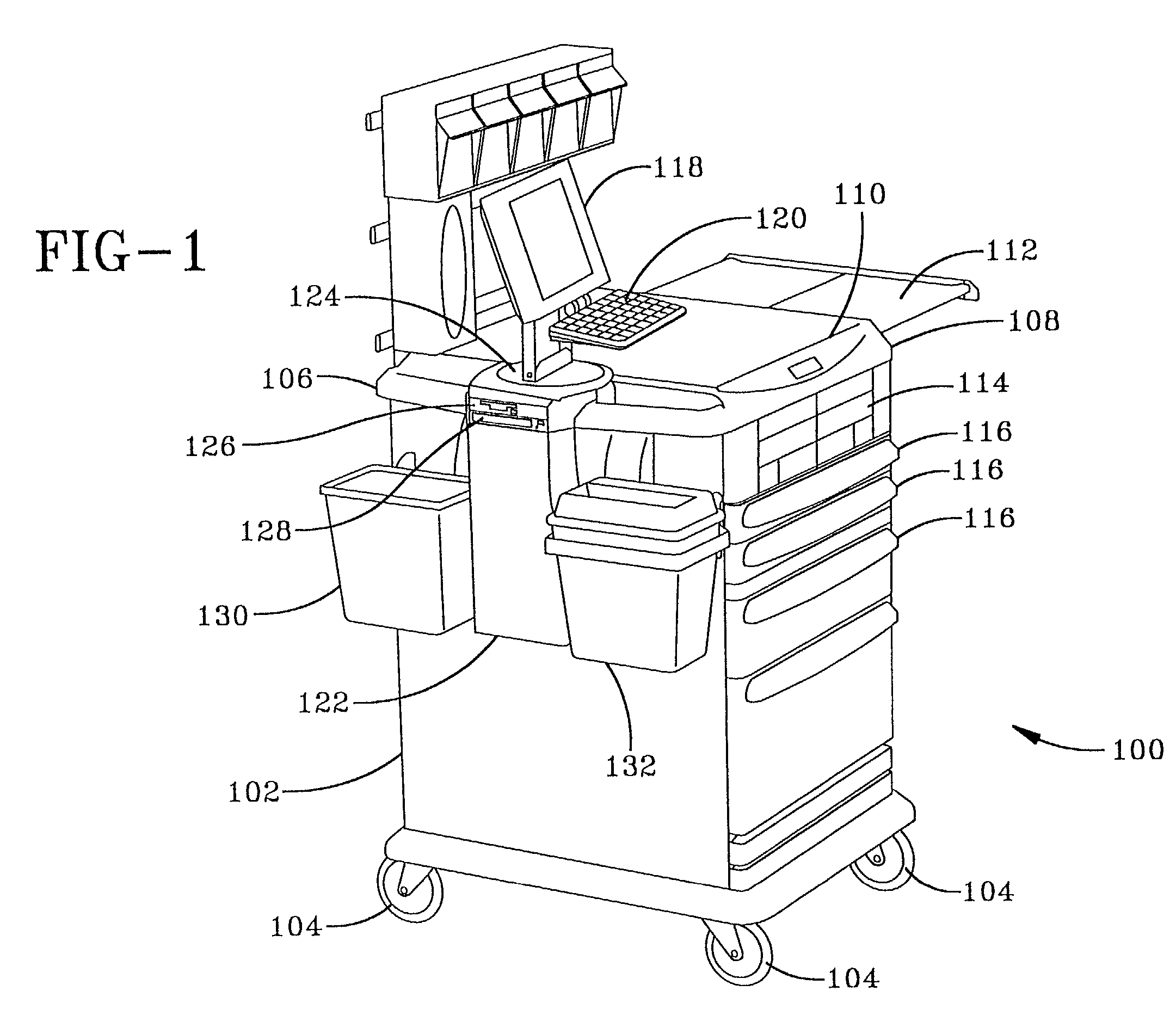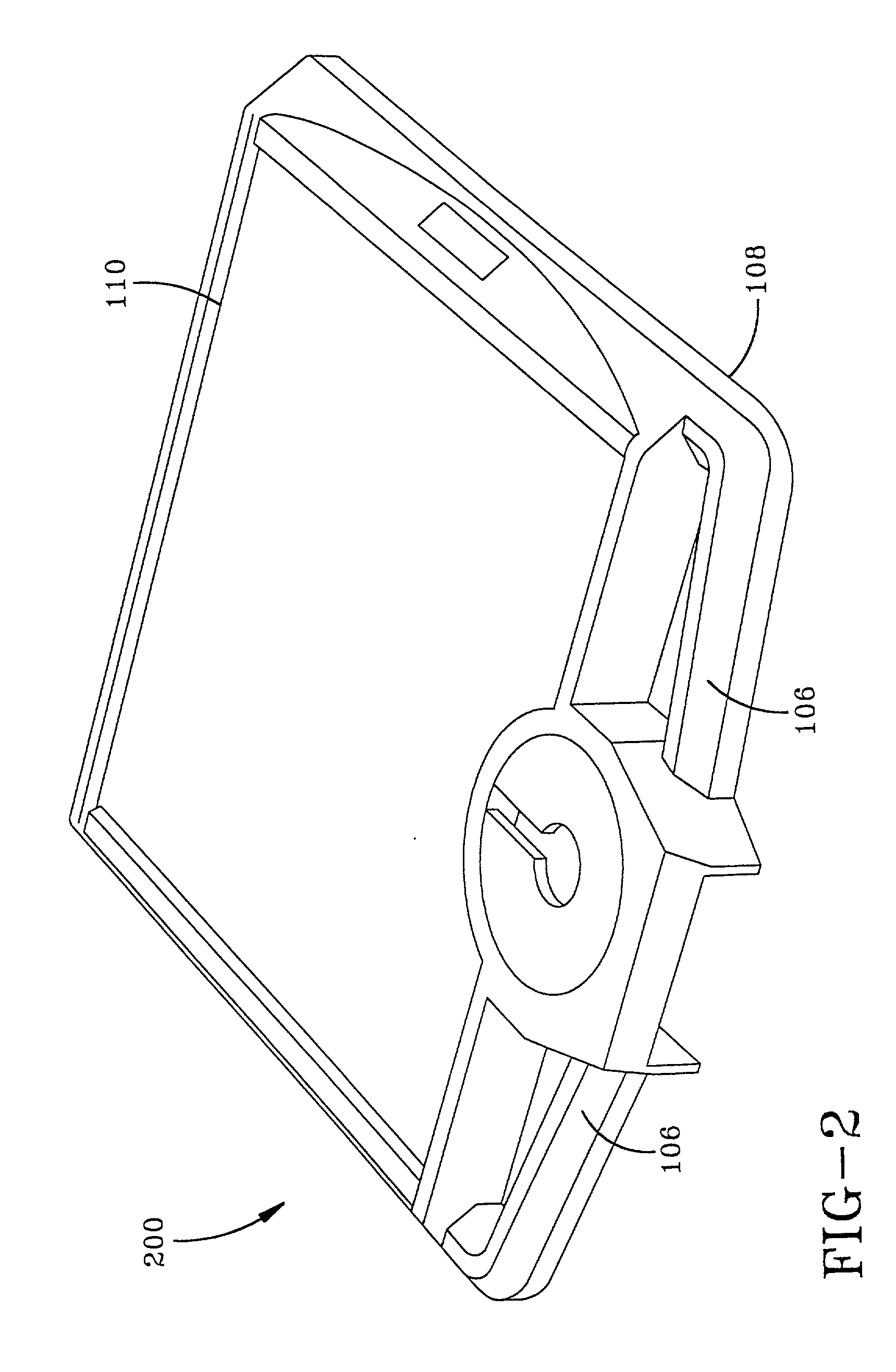Anesthesia cart
- Summary
- Abstract
- Description
- Claims
- Application Information
AI Technical Summary
Benefits of technology
Problems solved by technology
Method used
Image
Examples
Embodiment Construction
)
[0036] Referring to FIG. 1, the anesthesia cart 100 of the present invention, preferably, is a compact cabinet 102 supported by wheels 104 so that it may be moved easily throughout an operating room. Alternatively, casters or rollers may be used to increase maneuverability of the cart. A handle 106 molded with the top surface facilitates movement of the cart in all directions. A bumper 108 around the bottom periphery of the unitop surface protects the cart from being damaged in the event of a collision. Finally, a flat work surface area 110 and pull-out shelf 112 provides ample space for performing a variety of tasks in addition to dispensing and controlling anesthesiology items.
[0037] As used herein, "anesthesiology items" refers to all narcotic medications, non-narcotic medications, and supplies such as Fentanyl, Pentothal Sodium, Demerol, Prostigmin, Robinul, syringes, needles, catheters, masks, etc. Anesthesiology items to be dispensed are stored in drawers or receptacles 114, ...
PUM
 Login to View More
Login to View More Abstract
Description
Claims
Application Information
 Login to View More
Login to View More - R&D
- Intellectual Property
- Life Sciences
- Materials
- Tech Scout
- Unparalleled Data Quality
- Higher Quality Content
- 60% Fewer Hallucinations
Browse by: Latest US Patents, China's latest patents, Technical Efficacy Thesaurus, Application Domain, Technology Topic, Popular Technical Reports.
© 2025 PatSnap. All rights reserved.Legal|Privacy policy|Modern Slavery Act Transparency Statement|Sitemap|About US| Contact US: help@patsnap.com



